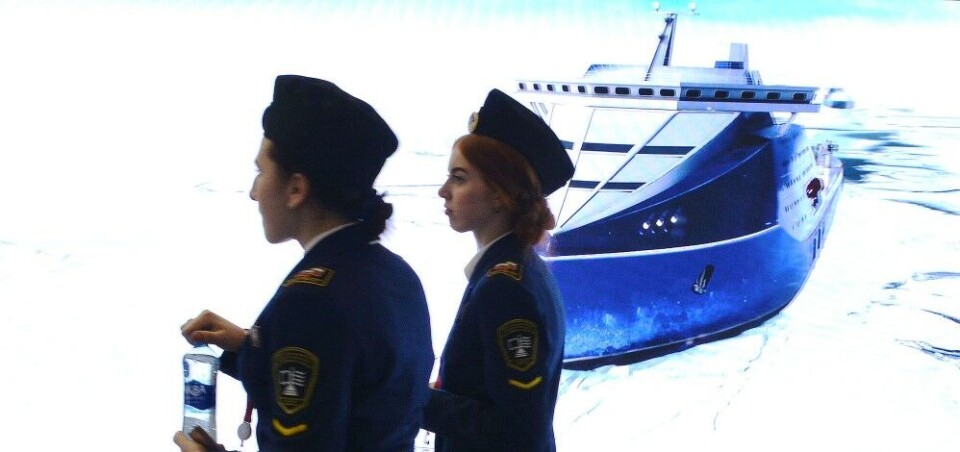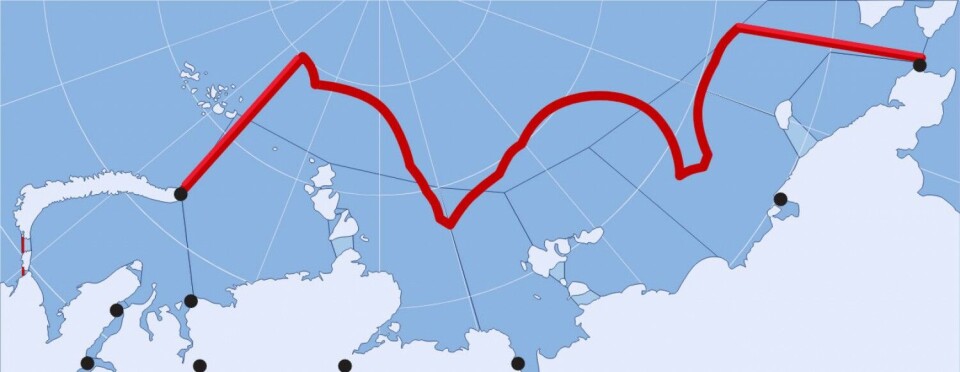
Moscow adopts 15-year grand plan for Northern Sea Route
By year 2035, the Russian government intends to build at least 40 Arctic vessels, upgrade 4 regional airports, construct railways and seaports and facilitate a massive exploitation of Arctic natural resources.
p.p1 {margin: 0.0px 0.0px 0.0px 0.0px; line-height: 16.0px; font: 14.0px Arial; color: #262626; background-color: #ffffff}p.p2 {margin: 0.0px 0.0px 0.0px 0.0px; line-height: 16.0px; font: 14.0px Arial; color: #262626; background-color: #ffffff; min-height: 16.0px}p.p3 {margin: 0.0px 0.0px 0.0px 0.0px; line-height: 20.0px; font: 17.0px Georgia; color: #1f1f1f; background-color: #ffffff}p.p4 {margin: 0.0px 0.0px 16.0px 0.0px; line-height: 18.0px; font: 16.0px ‘Times New Roman’; color: #000000; min-height: 18.0px}p.p5 {margin: 0.0px 0.0px 10.6px 0.0px; line-height: 20.0px; font: 17.0px Georgia; color: #1f1f1f; background-color: #ffffff}span.s1 {font-kerning: none}
The development plan for the Northern Sea Route was signed by Prime Minister Dmitry Medvedev just few days before the start of the new decade. The document has been in the making for some time and it was considered of great importance that it was approved and signed before the end of 2019.
Medvedev put his signature on the document on the 21st of December and it was published on the government website on the 30th. Behind its development stands Rosatom, the nuclear power company with top responsibilities for the Northern Sea Route. The document builds on President Putin’s decrees from May 2018 and the request to boost annual shipments on the Northern Sea Route to 80 million tons by year 2024.
Tight schedule

The Russian government and its respective agencies and state companies are in big hurry to meet targets for the remote Arctic sea route. The plan includes as many as 84 points and covers a wide range of priorities, from the development of needed infrastructure and building of new ships to the mapping of natural resources and launch of new satellites and meteorological equipment.
The first of the priorities are to be completed already early 2020. Thus, by April, a regional geological exploration program is to be adopted. And by June, key decisions are to be taken on the development of a railway line to Sabetta, the seaport and LNG terminal in the northern coast of the Yamal peninsula.
A massive development of natural resources is needed for Russian to meet its ambitions on the Arctic route and several of the country’s biggest companies are involved. Among them are oil and gas companies Novatek, Gazprom Neft, Rosneft and the Independent Oil Company. In addition comes minerals and ores developers like Nornickel, VostokCoal, Baimskaya, KAZ Minerals, Vostok Engineering and Severnaya Zvezda.
New ships
A big number of new vessels are part of the plan. By year 2035, about 40 new vessels are to be built, several of them nuclear icebreakers. In addition to five LK60 icebreakers, the country will build three Lider-class vessels, the first one to be ready for operations in December 2027. The second and third ships are to be ready in late 2030 and 2032 respectively.
The Lider will be able to break through the thickest Arctic ice and open wide ship lanes across the region for escorts of commercial ships. It will be equipped with a 120 MW engine capacity.
In addition, at least 13 new hydrographical ships will be built, among them a very powerful ship with top ice-class Arc7. Also at least 16 various support and rescue ships are planned.
The plan also outlines the upgrade and life-prolongation of several existing ships, among them nuclear icebreakers «Yamal», «Taymyr» and «Vaygach» and nuclear materials special purpose vessels «Lotta», «Imandra» and «Serebryanka»
New infrastructure
Decisions are to be taken on the development of new major infrastructure projects, among them several railway lines.
By December 2022, the government will decide on whether to proceed with the planning of the Belkomur railway line between Arkhangelsk, Syktyvkar and Perm, as well as a line from Sosnogorsk to Indiga on the Pechora sea coast.
By mid-2024, key decisions are to be taken on the development of a rail connection across the River Ob from Salekhard to Labytnangi and all the way to Nadym and Novy Urengoy.
Four regional airports, the ones in Amderma, Pevek, Chersky and Keperveem, are to get a major facelift.
The major dredging operations in the Gulf of Ob that is to pave the way for sailing with big vessels in the area is to be completed in December 2021.
Also the Murmansk Transport Hub, the project that includes a new 46 km long railway and port facilities on the western banks of the Kola Bay, is to be completed by December 2021.
Law on the Arctic
The new plan for the Northern Sea Route comes at the same time as the federal government is in the process to complete a new Law on the Arctic. The new legislation is expected to be adopted in the first quarter of 2020 and include major incentives for natural resource developers.
According to government estimates, proposed tax preferences will lead to as much as 15 trillion rubles (€216 billion) of new investments in the Russian Arctic over the next 15 years. Five categories of projects will be entitled to major tax cuts, among them offshore petroleum projects, production of LNG, the petrochemical industry and mineral extraction
It is all in line with the requests of President Putin and his desire for annual shipments on the Northern Sea Route to reach 80 million tons by year 2024.
«What do we have to do to reach the target?» Deputy Prime Minister Yuri Trutnev asked in a recent meeting in the country’s Arctic Commission meeting and left no doubt about the solution.
What is needed is a new system of tax preferences for natural resource developers, he underlined.
You can help us …
For 18 years, the Barents Observer has provided serious, fact-based stories about life and developments in the North. Please help us to strengthen our independent journalism. Get engaged, give a small donation. Thank you
















